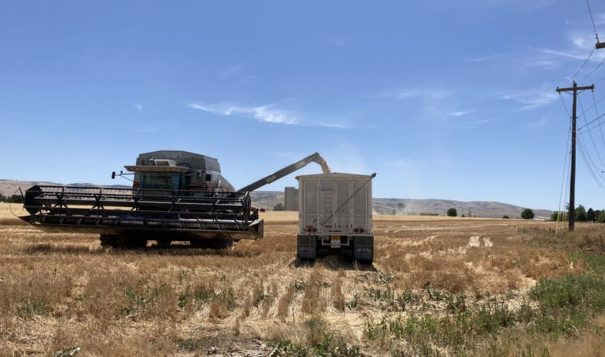 The Confederated Tribes of the Umatilla Indian Reservation has purchased farmland as part of their comprehensive land reclamation strategy.
The Confederated Tribes of the Umatilla Indian Reservation has purchased farmland as part of their comprehensive land reclamation strategy.
From Washington state to Ohio, creativity and strategy are getting land back for tribal nations
Land is one of the greatest resources for tribal nations across the country. Some 56 million acres are held in trust by the federal government for tribes. That’s approximately 2 percent of the country. However, 90 million acres were taken by the United States between 1887 and 1934 tribes through the Allotment Act, termination and, sometimes, illegal actions.
The Leech Lake Band of Ojibwe in Minnesota saw land returned in December 2020. The Leech Lake Reservation Restoration Act was sponsored by Sen. Tina Smith and Rep. Betty McCollum, and signed by the president.
(Previous: Leech Lake homelands returned)
The bill directs the Chippewa National Forest to transfer 11,760 acres of forest service lands to the Department of the Interior to be held in trust for the Leech Lake Band of Ojibwe as part of the reservation. The lands to be transferred back to the reservation were illegally transferred by the Interior to the Chippewa National Forest in the 1940s and 50s without consent of the band or individual allottees.
Leech Lake tribal representative Leroy Staples Fairbanks III has been working on this issue since 2016, and the struggle goes back much further.
“We’ve also purchased close to 3,000 acres of land in our strategy of land reacquisition planning. That doesn’t seem like a lot, but it is to people who’ve seen the limited amount of land opportunities for tribal members, for housing, for business, for economic, for agriculture, for whatever use they are,” Fairbanks said in Indian Country Today’s newscast.
Across the country, the Confederated Tribes of the Umatilla Indian Reservation in Oregon have developed a comprehensive land reclamation strategy as well. Koko Hufford, the tribe’s land manager, said they have focused on inheritance law and estate planning to seek the return of lands in control of individuals who are not tribal members. With the assistance of the Indian Land Tenure Foundation, they have participated in the Interior’s land buy-back program.
“We decided that because of our checkerboard situation, because of the allotment act that we needed to buy those, those parcels that we didn’t own, not only by non-Indians, but Indians from other reservations,” Hufford said on the newscast. The Umatilla budget is around $1 million annually for land reclamation.

President of the Indian Land Tenure Foundation Chris Stainbrook said tribes are getting land back in a number of ways, like land swap in Rapid City, South Dakota, and three acres of land in Upper Sandusky, Ohio, were given back to the Wyandotte Nation by the United Methodist Church.
“In 2008, we helped a county in Washington give park to a tribe. The tribe didn’t have the funds to really maintain the park, so we bought him a pickup truck and a lawnmower, and they’ve got the land back,” Stainbrook said on the newscast. “I think it’s important that examples like Umatilla and Leech Lake are out there, so people can see that it’s not howling at the moon it’s actually happening and you just have to put a plan together and move forward.”
Watch Indian Country Today’s newscast, “It’s not howling at the moon,” for the video interview with Fairbanks, Hufford and Stainbrook.
Volume 25%
(Related newscast: The powerful asset of tribal lands)
